Exploring Monochromatic Interiors: Abundance or Lack of Colour
The monochromatic colour scheme is a design approach that uses variations of a single colour to create a unified and simple look. This involves selecting a base colour and incorporating its various shades, tints, and tones to add depth and interest. Shades are created by adding black to the base colour, tints by adding white, and tones by adding grey. Monochromatic design focuses on one colour’s full spectrum, providing a more unified and serene atmosphere. This uniformity can make spaces appear larger and more cohesive, as there are no contrasting colours to break the flow.
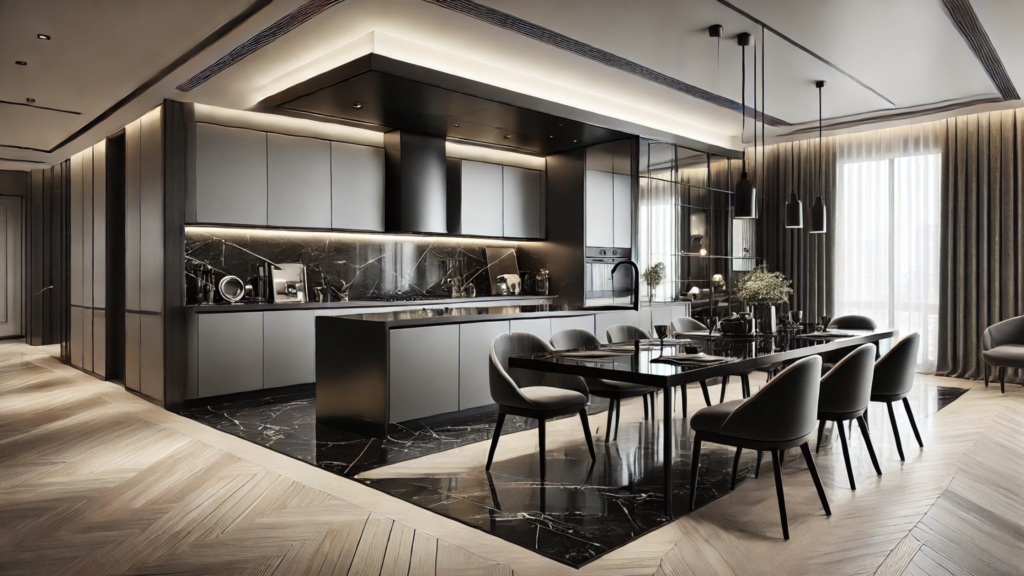
Table of Contents
Key Elements of Monochromatic Interior Design
Choosing the Right Base colour
Selecting the right base colour is the cornerstone of a successful monochromatic interior design. The base colour sets the tone for the entire space and influences the overall ambiance. When choosing this colour, consider the room’s purpose and the mood you want to evoke. For instance, blues and greens can create a calming and serene atmosphere, ideal for bedrooms and bathrooms, while warmer colours like reds and oranges can make living spaces feel cosy and inviting.
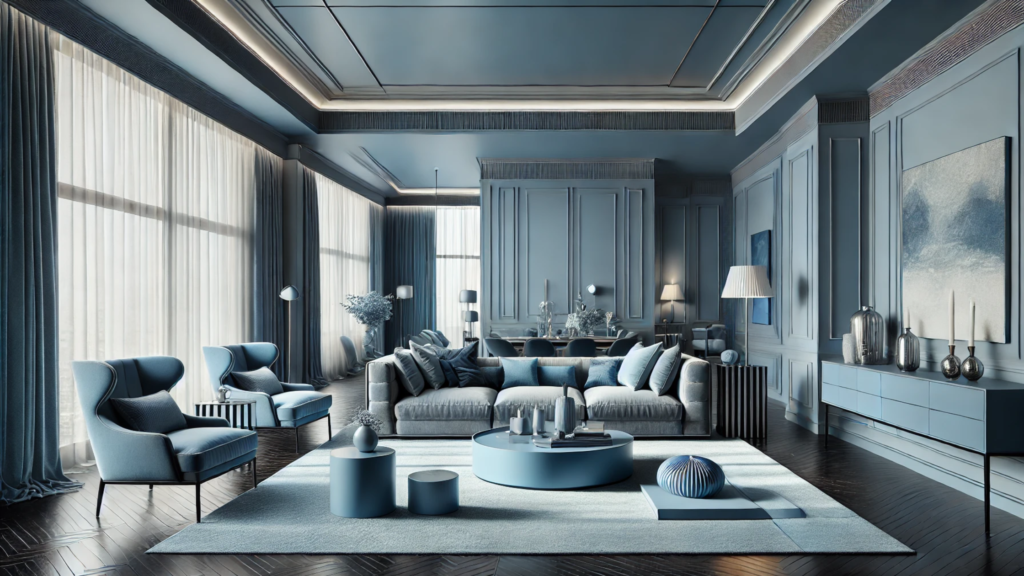
Using Different Textures to Add Depth and Interest
In a monochromatic scheme, texture plays a pivotal role in adding depth and interest. Different textures can break up the uniformity of a single colour, providing tactile and visual variety. For instance, combining smooth surfaces like polished marble with rougher textures like woven fabrics or natural wood can create a rich, layered effect. Textiles such as velvet, linen, and wool can introduce warmth and comfort, while metal and glass add sleek, modern touches. The interplay of these textures ensures that the space feels dynamic and engaging, despite the limited colour palette.
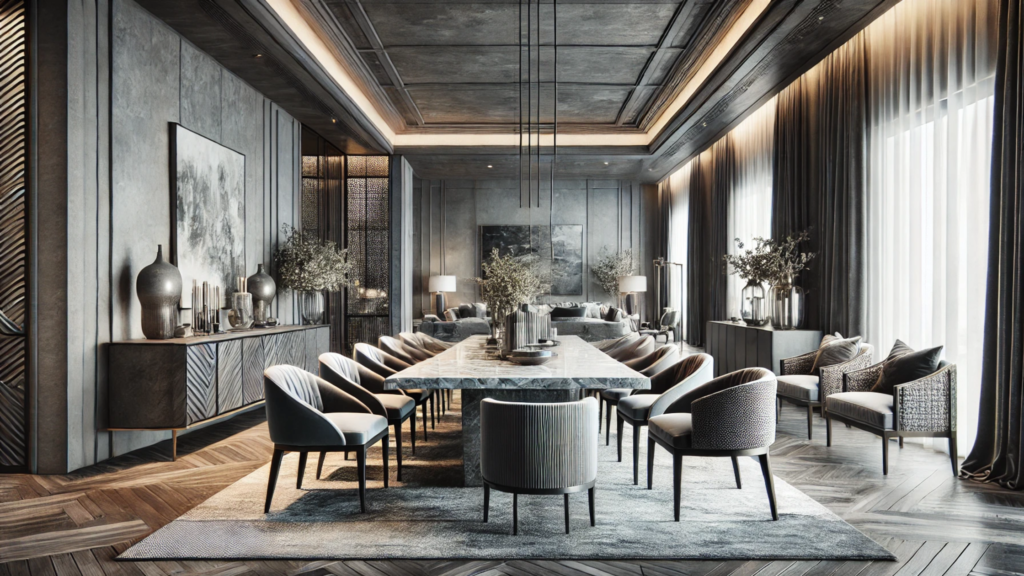
Incorporating Patterns Without Overwhelming the Space
Patterns can also enhance a monochromatic interior, but they must be used thoughtfully to avoid overwhelming the space. Subtle patterns, such as tone-on-tone designs, can add a sense of intricacy and detail without disrupting the overall harmony. For example, a geometric pattern in a slightly darker or lighter shade of the base colour can provide visual interest on rugs, throw pillows, or wallpaper. Additionally, organic patterns, like florals or abstract motifs, can introduce a softer, more fluid aesthetic.
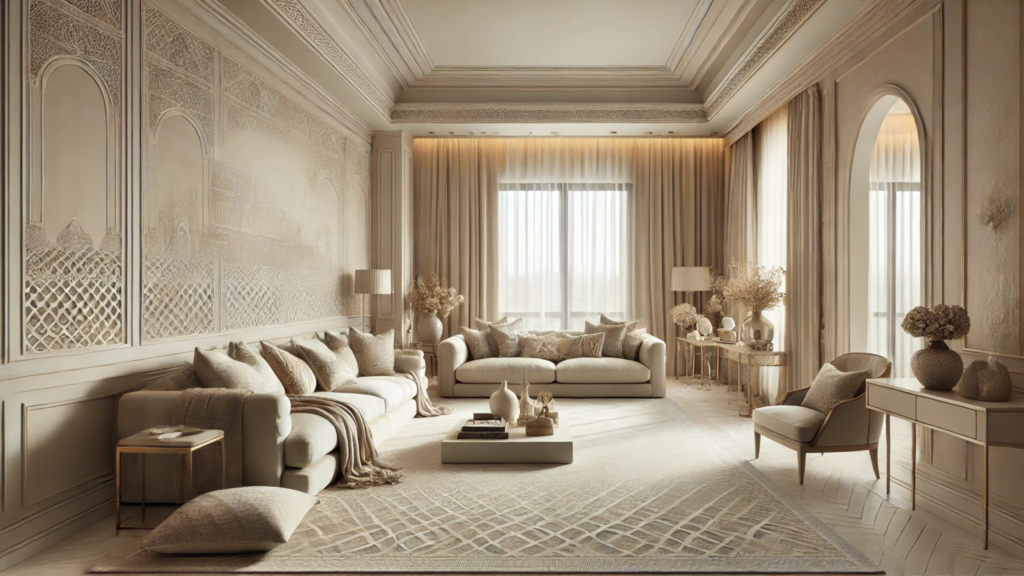
Selecting Furniture That Compliments the Colour Scheme
Choosing the right furniture is essential to complement a monochromatic colour scheme. Furniture pieces should align with the chosen base colour and its variations, ensuring they blend seamlessly into the overall design. Opt for pieces with clean lines and simple forms to maintain a cohesive and sophisticated look. Upholstered furniture in different shades, tints, and tones of the base colour can add depth and comfort. Additionally, incorporating furniture with various textures, such as a leather sofa paired with a velvet armchair, can further enhance the visual appeal.
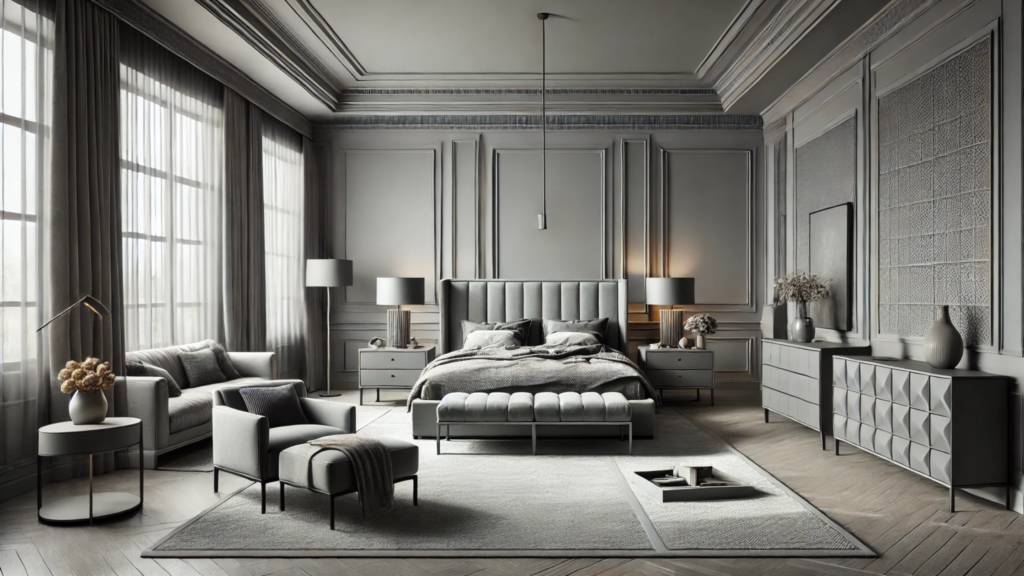
Role of Natural and Artificial Lighting in Enhancing Monochromatic Designs
Lighting is a critical element in enhancing a monochromatic interior design. Natural light can make a space feel open and airy, while also highlighting the nuances of the chosen colour palette. Large windows, skylights, and strategically placed mirrors can maximise the amount of natural light entering the room. Artificial lighting, on the other hand, can be used to create a specific mood and ambiance. Layered lighting, including ambient, task, and accent lighting, can add depth and dimension to the space.
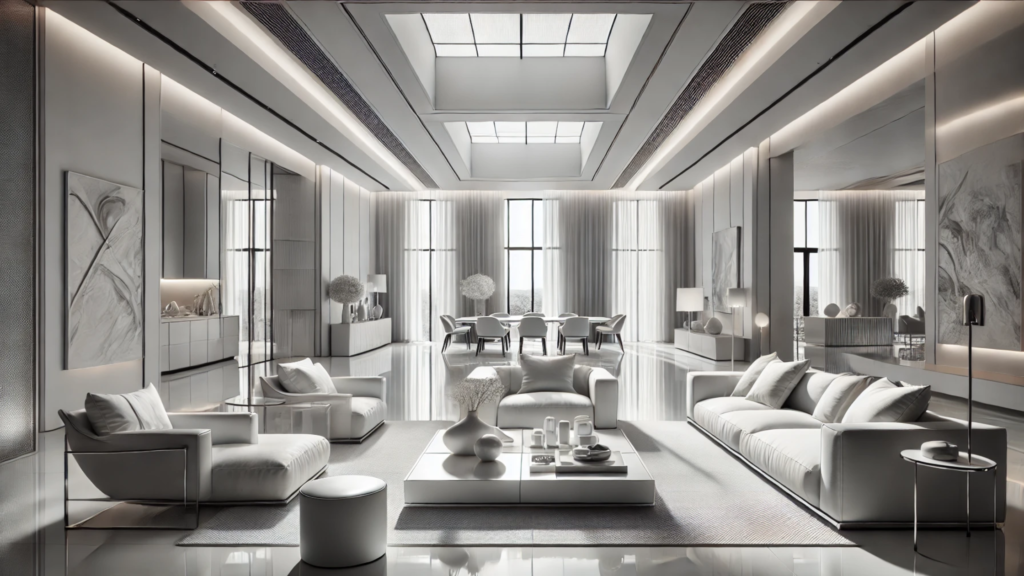
To Colour or Not to Colour?
Psychological Impact of Monochromatic Designs
Monochromatic interior designs have a profound psychological impact, often creating an environment that feels calm, serene, and orderly. The use of a single colour family throughout a space can have a soothing effect on the mind, reducing visual noise and promoting relaxation. This type of design can be particularly beneficial in spaces meant for rest and recuperation, such as bedrooms and living rooms.
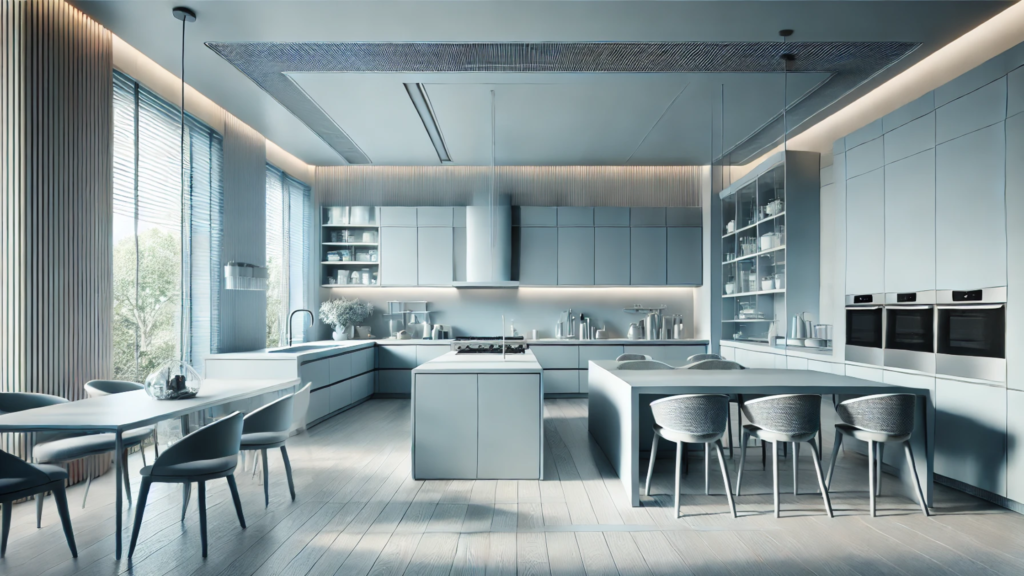
Creating Harmony and Unity in a Space
One of the key benefits of monochromatic interiors is their ability to create harmony and unity within a space. By using variations of a single colour, designers can ensure that all elements of the room work together seamlessly. This approach eliminates the risk of clashing colours and helps to establish a consistent visual theme. The result is a space that feels well-organised and cohesive, where each piece of furniture and decor item contributes to the overall aesthetic.
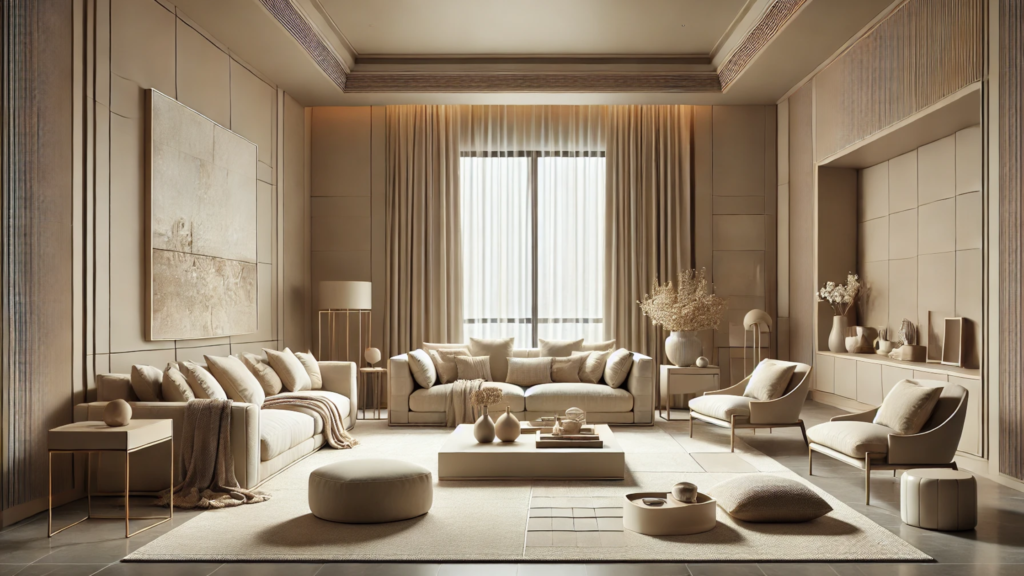
Making Small Spaces Appear Larger and More Cohesive
Monochromatic colour schemes are particularly effective in making small spaces appear larger and more cohesive. The use of a single colour can create an illusion of continuity, drawing the eye seamlessly from one area to another and preventing the room from feeling fragmented. This continuous flow can make a compact space feel more expansive and open. Additionally, lighter shades and tints of the base colour can reflect more light, further enhancing the sense of spaciousness.
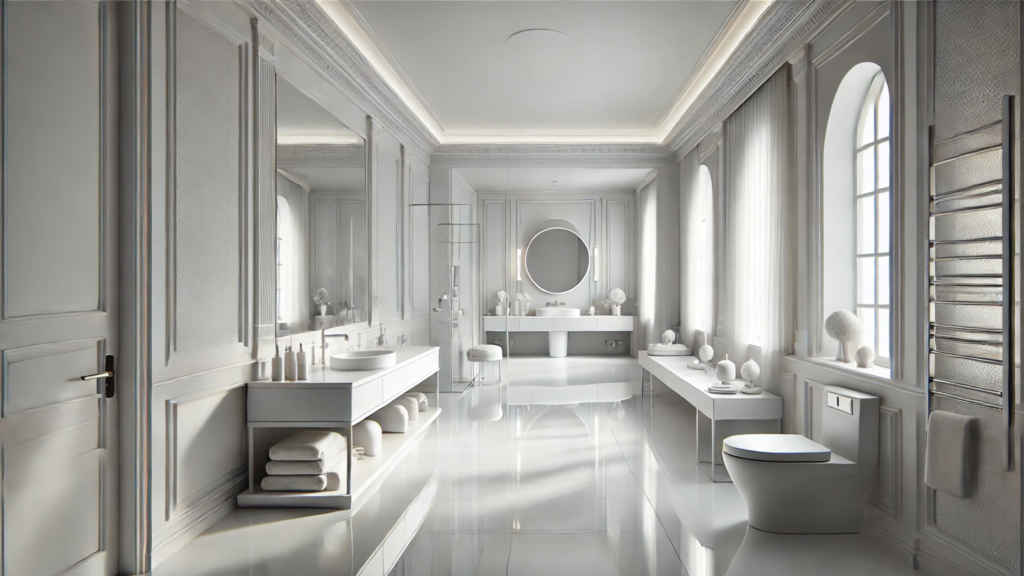
Challenges of Monochromatic Interior Design
Risk of Spaces Looking Bland or Monotonous
Despite its many benefits, monochromatic design can sometimes lead to spaces that appear bland or monotonous. When not executed properly, the reliance on a single colour family can result in a lack of visual interest and variety. This can make the space feel uninviting and uninspired. To mitigate this risk, it is essential to incorporate various shades, tints, and tones of the base colour, as well as to introduce elements that add depth and dimension, such as textures and patterns. These strategies can prevent the design from feeling one-dimensional and ensure that it remains visually engaging.
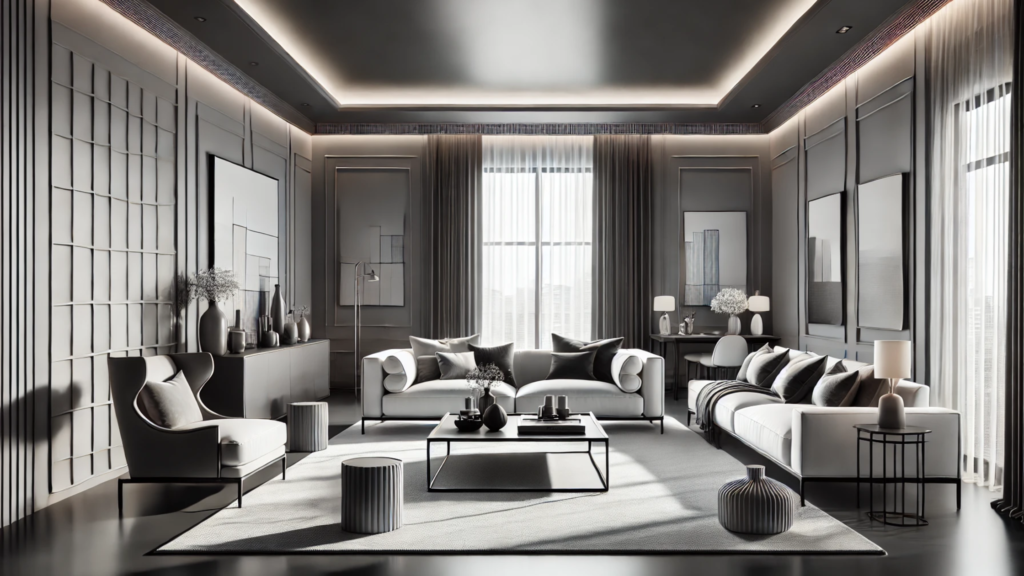
Balancing Textures and Materials to Avoid a Dull Appearance
Another challenge in monochromatic design is balancing textures and materials to avoid a dull and flat appearance. In a monochromatic scheme, where colour variation is limited, texture becomes a critical tool for adding interest and complexity. Mixing different textures, such as combining smooth, glossy surfaces with rough, matte finishes, can create a layered and dynamic look. Additionally, using a variety of materials—such as wood, metal, glass, and textiles—can further enhance the design’s richness. Thoughtful placement of textured elements and strategic use of patterns can add vibrancy and prevent the space from feeling monotonous.
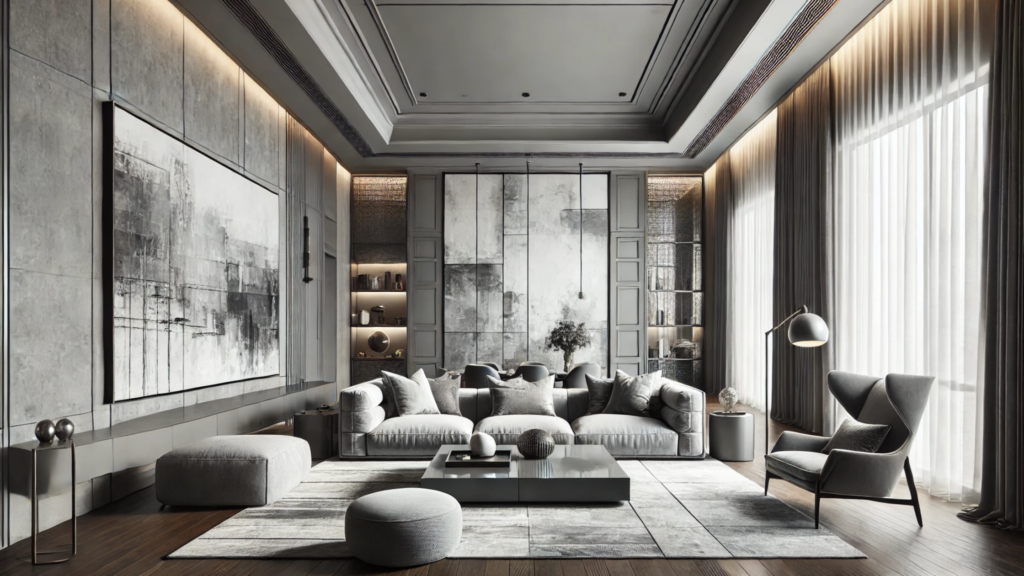
Living Room
Monochromatic living room setups can vary widely, from minimalist and modern to cosy and traditional. A classic example might feature a palette of varying shades of grey, with a light grey sofa, charcoal throw pillows, and a patterned rug in a medium grey tone. The walls could be painted in a soft dove grey, while metallic accents, like a silver coffee table and chrome light fixtures, add a touch of sophistication. Another setup could use a base colour like navy blue, incorporating dark blue furniture, lighter blue curtains, and a mix of blue and white accessories to create a cohesive yet dynamic space.
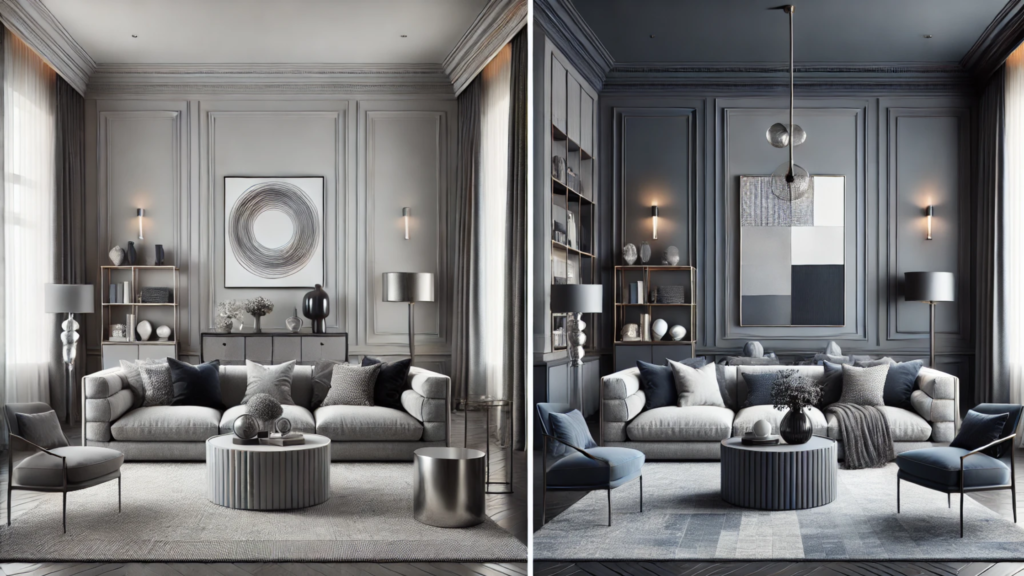
Bedroom Design
A monochromatic bedroom can become a sanctuary of calm and relaxation. Choose a soothing base colour like soft blue, pale green, or warm beige. Use this colour for the walls, bedding, and curtains, and introduce varying shades and tints to add depth. For example, a pale blue bedspread, medium blue throw pillows, and a dark blue accent wall can create a layered look that promotes tranquillity. Complement the colour scheme with natural materials, such as a wooden bed frame and nightstands, to enhance the serene atmosphere.
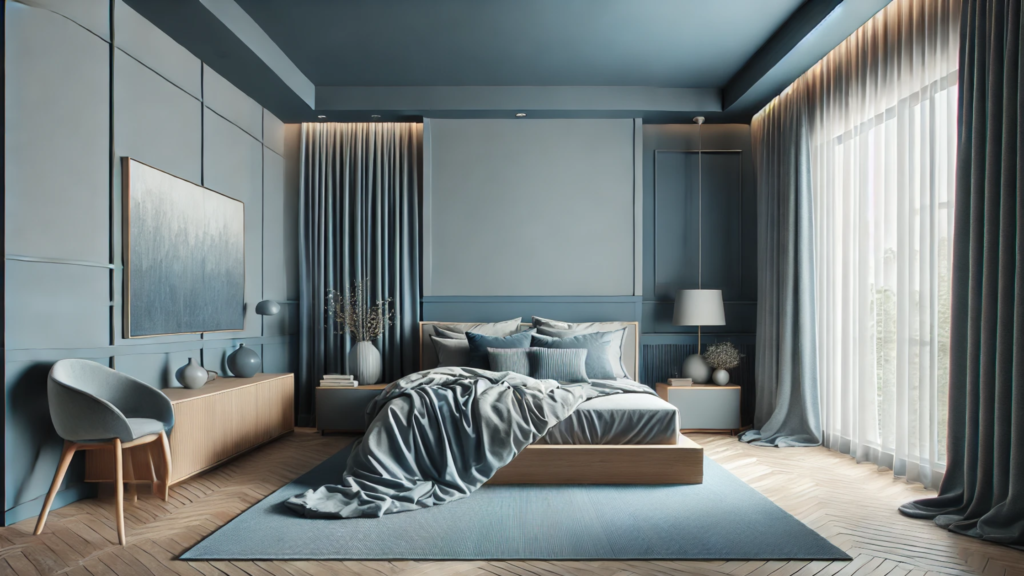
Kitchen and Dining Area
Monochromatic kitchens can be both functional and stylish, offering a clean and cohesive look. Start with a neutral base colour like white, black, or gray for cabinets, countertops, and backsplashes. Incorporate different shades and finishes to add interest, such as matte black cabinets with glossy black countertops or white cabinets with a marble backsplash. Stainless steel appliances and fixtures can add a modern touch, while wooden or metal accents can introduce warmth and texture. Ensure that the kitchen remains practical by using durable materials and efficient layouts that facilitate easy cooking and cleaning.
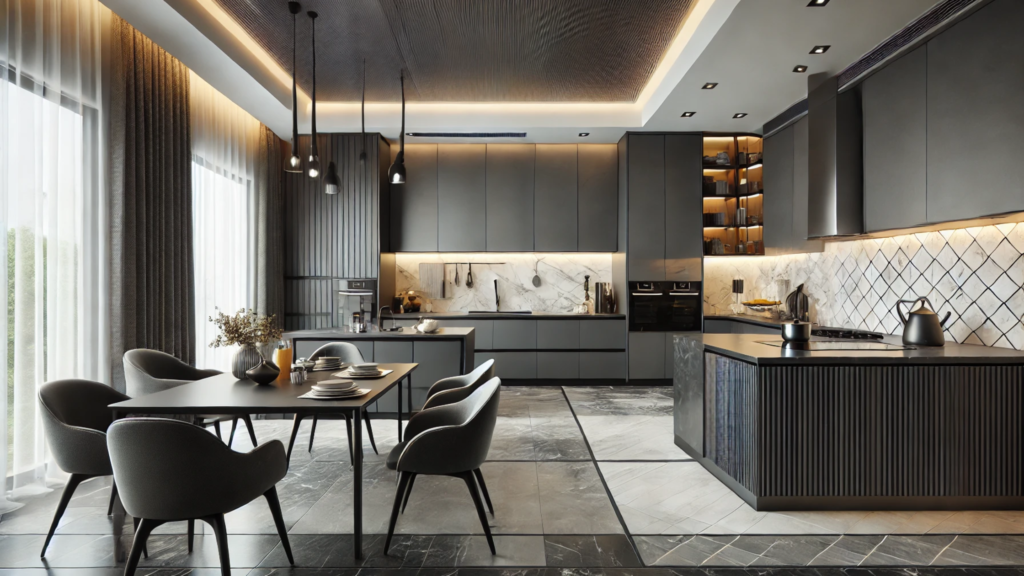
By following these practical applications and ideas, you can create monochromatic living rooms, bedrooms, kitchens, and dining areas that are both visually stunning and highly functional. Embracing a monochromatic palette allows for creativity within a unified framework, resulting in spaces that are harmonious, elegant, and inviting.
How Monochromatic Design Fits into Contemporary Interior Design Trends
Monochromatic design seamlessly integrates with several contemporary interior design trends. Its inherent simplicity and focus on a single colour palette make it a natural fit for minimalist aesthetics, where the emphasis is on creating serene, uncluttered spaces. Monochromatic schemes also align well with sustainable design by encouraging the use of fewer, more versatile materials and colours. The ability to create a cohesive and harmonious look makes monochromatic interiors ideal for biophilic design, where natural textures and materials can be highlighted within a unified colour palette. Additionally, monochromatic elements can be incorporated into maximalist spaces by using bold variations of a single colour to create striking visual impact without overwhelming the senses.
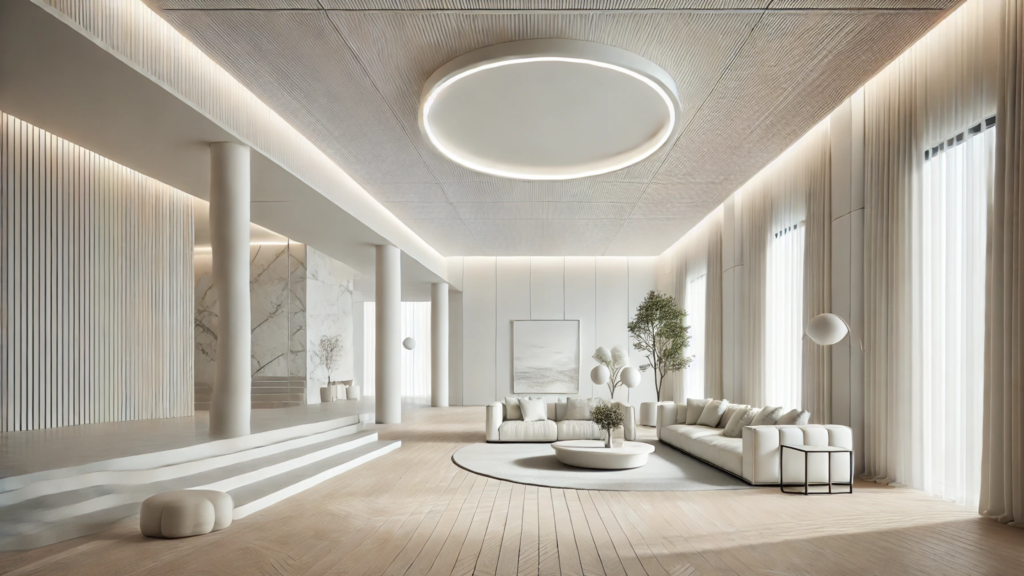
Conclusion
Monochromatic interior design is extra than a coloration choice—it’s a cultured method that balances harmony, depth, and class. By leveraging the overall spectrum of a single hue, and layering it with textures, styles, and lighting, you may create spaces that experience both calming and charming. Whether you’re working with a small room or designing a modern-day open format, this undying fashion offers flexibility and elegance that suits any area. Embrace the electricity of simplicity, and let a unified palette raise your property with convenient attraction.
Frequently Asked Questions (FAQs)
What is a monochromatic interior design?
- Monochromatic interior design involves using variations of a single colour throughout a space to create a cohesive and harmonious look. This design approach includes the use of different shades, tints, and tones of the chosen base colour.
- By focusing on one colour family, monochromatic interiors achieve a unified and elegant aesthetic, while still offering depth and visual interest through texture, patterns, and material variations.
- This method can be applied to various design styles, from minimalist to traditional, making it a versatile choice for any interior.
How do I choose the right base colour for a monochromatic design?
- Choosing the right base colour for a monochromatic design depends on the mood and function of the space.
- For a calm and serene atmosphere, consider cool colours like blues and greens, which are ideal for bedrooms and bathrooms. Warmer colours like reds and oranges can create a cosy and inviting ambiance, perfect for living rooms and dining areas.
- It’s also important to consider the natural light in the room, as it can affect how the colour appears throughout the day. Testing paint samples in different lighting conditions can help ensure the chosen colour will work well in the space.
How can I prevent a monochromatic room from looking bland or monotonous?
- To prevent a monochromatic room from looking bland or monotonous, it’s essential to incorporate various textures, patterns, and materials. Using different textures, such as a mix of smooth and rough surfaces, can add depth and interest. Patterns, like geometric designs or tone-on-tone motifs, can introduce complexity without overwhelming the space.
- Additionally, varying the shades, tints, and tones of the base colour helps create visual layers. Thoughtfully chosen accessories, furniture, and lighting can also contribute to a dynamic and engaging monochromatic interior.
What are the benefits of monochromatic interior design?
- Monochromatic interior design offers several benefits, including a calming psychological impact, as the use of one colour family can create a serene and orderly environment.
- This approach also fosters harmony and unity, ensuring that all elements of the room work together seamlessly. Monochromatic schemes can make small spaces appear larger and more cohesive by creating a continuous flow that draws the eye and avoids visual fragmentation.
- Overall, this design style is versatile and timeless, suitable for various aesthetics and spaces.
SJ DESIGN CONSULTANTS
Transforming your vision into reality. Explore designs that inspire, elevate, and redefine your lifestyle with SJ Design Consultants.
